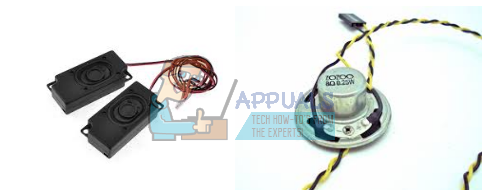Fix: Skype Audio Not Working
Audio is essential in almost all programs and applications. They give us warnings, notifications, guidelines, enable teleconferencing and add to the entertainment in videos, games and movies. However, there has been a very peculiar problem with PC users that use Skype for teleconferencing or telecommunication. Users have reported that their computer does not play any sound on the onboard speakers or via the headphones that are plugged in. Strangely enough, whenever they open Skype, the sound seems to come back on and enables them to telecommunicate. The Skype notification sounds also seem to function as expected. Running the inbuilt sound test on the speakers also seems to work. This has baffled many users, but this article will explain this problem and give working solutions.
Why you get audio from Skype only
Skype is a telecommunication application; and like all telecommunication software, the setup includes you selecting a playback device and a recording device. Your onboard speakers and microphones are usually set as the default devices for Skype. However, this might not be your default system playback device. If you have more than one soundcard or a second graphics card, there is a possibility that one of them has been set to take precedence over the other. If you are using an HDMI monitor or TV, it is likely that your sound was directed via the HDMI because the HDMI audio is the default device over the onboard speakers. Now, if your monitor does not have speakers, then you will not be able to hear any sound.
There is a possibility that your speakers might have been misconfigured in other ways hence needing troubleshooting and diagnosis. Bad or outdated audio drivers might also be the problem. Graphics cards that have HDMI and audio output will also cause this problem if the drivers are outdated or incorrect. Here are the methods you can use to resolve this issue.
Method 1: Set speakers to be the default playback and communications device
Setting your speakers as the default playback device will allow sound to be play through it. You will need to set it as the default communication device and disallow applications to take exclusive control over it so that Skype cannot be able to stop/pause other sounds playing through this device. Without unplugging anything, follow the steps below.
- Press Windows key + R to open Run
- Type mmsys.cpl and hit enter to open the sound settings and properties window.

- Click on Speakers / Headphones to select it
- From the bottom of the window, click on the downward arrow that says ‘Set Default’ and then set the speakers / headphones as the default device.
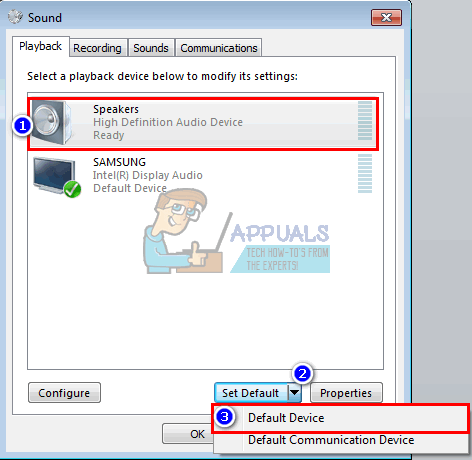
- Do this again and set it as the default communication device. Click apply
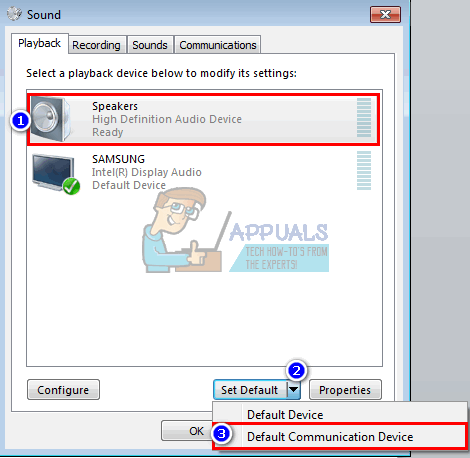
- Right click speakers / Headphones and select properties
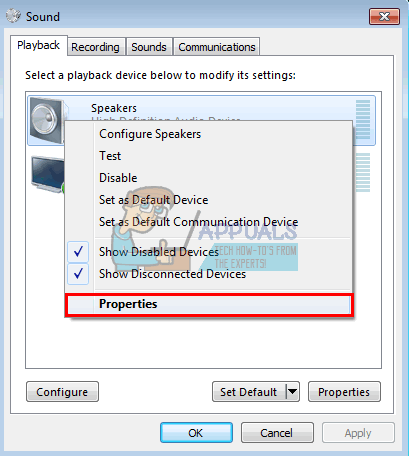
- Go to the advanced tab and uncheck “allow applications to take exclusive control of this device” then click apply. This means you will need to manually stop/pause other sounds when you get a Skype call.
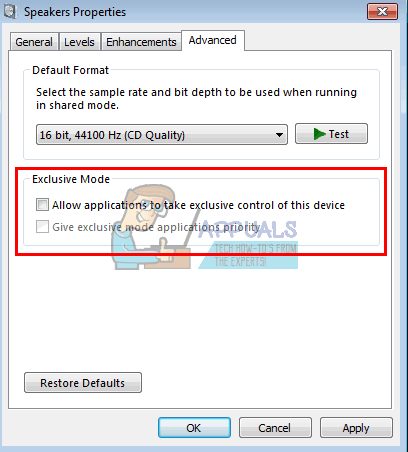
- Open Skype, go to tools then options,

- Click on audio settings and set speakers to “Speakers / Headphones”
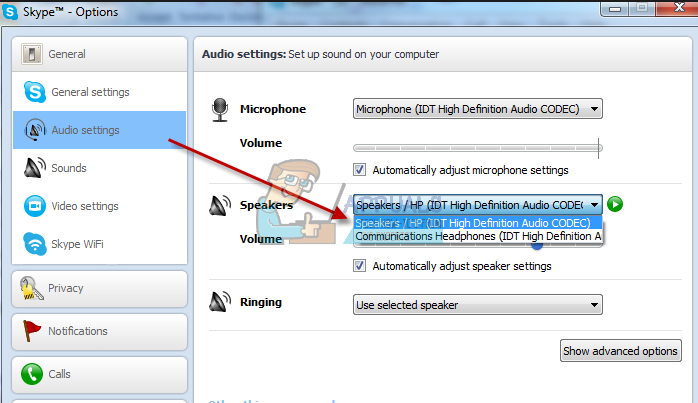
Method 2: Troubleshoot your sound
By troubleshooting your sound, windows will be able to diagnose any problem preventing sound from playing and attempt to resolve the problem.
- Go to the Microsoft easy fix support page here and download ‘find and fix problems playing sound’
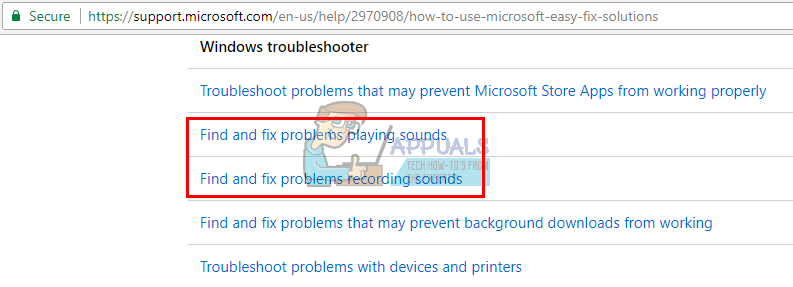
- Double click the downloaded file to Run/Open the diagnostic
- Click Next to begin the diagnosis
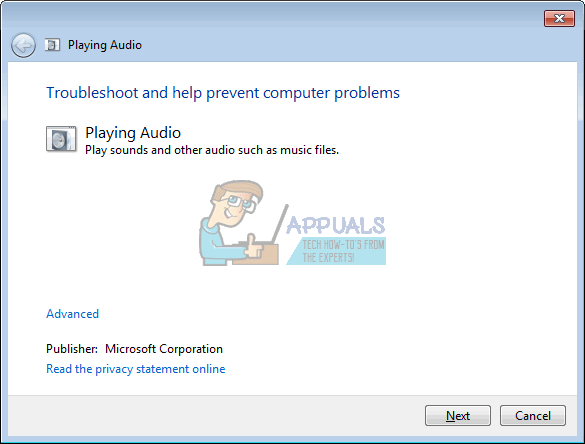
- Problems will be fixed automatically. If any additional errors come up, click “Fix All” to attempt a fix
- After the fix is complete click on ‘Close’ to close the diagnostic tool
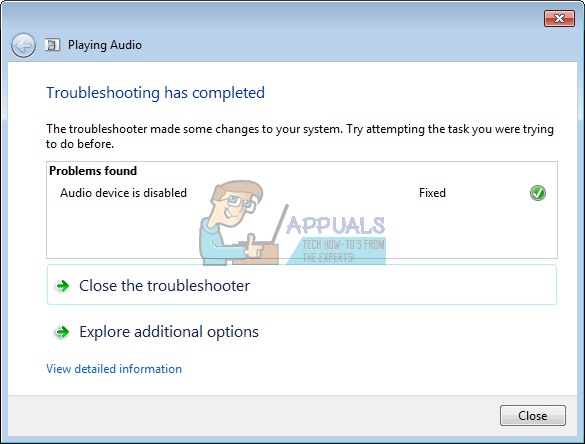
- You may need to restart your PC. You can also run the inbuilt troubleshooter in Windows 10 (Settings > Update and Security > Troubleshoot > Playing Audio > Run the troubleshooter)
Method 3: Update your audio and graphics card drivers
The best way to get your drivers is to go to your computer or audio/graphics card manufacturer and download the drivers that are compatible with your OS and your computer or audio/graphic cards. Most secondary graphics cards now have an integrated sound card that plays audio via HDMI.
We recommend you get your drivers from your computer manufacturer or your motherboard manufacturer e.g. Dell, or hp, because these manufacturers usually add some features and supports that the generic drivers might not have. Dell users can go here, hp users can go here, while Lenovo users can go here.
For your NVidia drivers, you can visit their download page here, Intel users can find their drivers here, while ATI (AMD, Radeon etc.) users can download drivers from here. You can also get the official Intel Graphics drivers from Intel here. We recommend using DDU (Display Graphics Uninstaller from here) to first remove the old drivers and clean install new drivers. Windows also provides updates via device manager.
- Press Windows Key + R to open Run
- Type devmgmt.msc and hit enter to open the device manager

- Expand the ‘Display Adapters’ section
- Right click on your Graphics device, and select ‘update driver software’. An internet connection will give you better results.
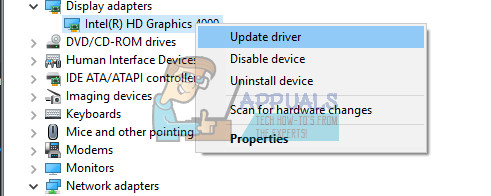
- On the next window click “Search automatically for updated driver software”
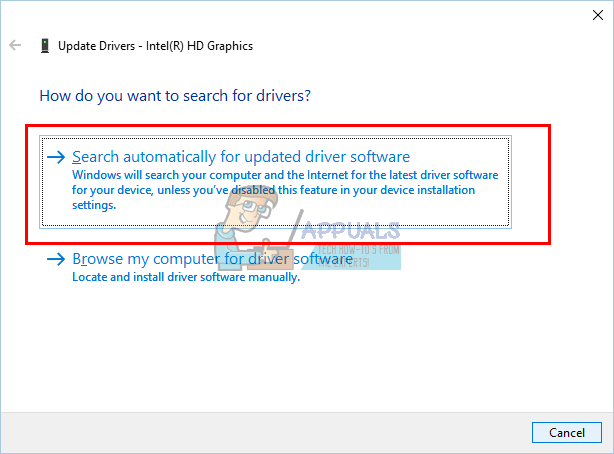
- Device manager will search for drivers online and install them.
- From step 3, go to ‘Sound, video and game controllers’ and update your audio drivers too.
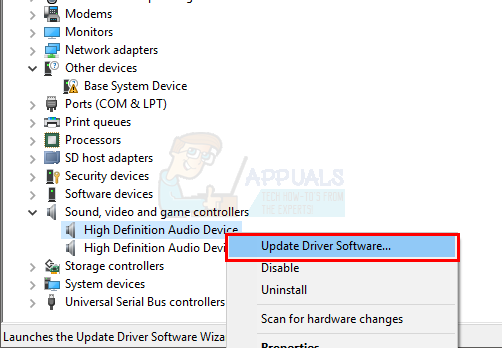
You can also update your Direct X from here for a better experience.
Method 4: Replace onboard speakers
This issue has also been solved before by replacing the speakers. It is very strange that Skype could play sound on faulty speakers where nothing else could. Maybe by driving a stronger signal via a loose wire makes the difference for Skype. This could be your solution when everything else fails.